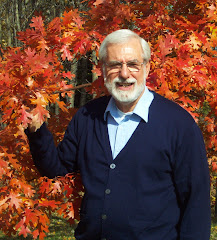Denial is a strong central theme in all addiction. An absolutely necessary condition to recovery from any addiction, then, is to come out of denial and face the full unpleasant reality of just how self-destructive the addiction is. The following article by Dr. Jenny Tylee is an invitation to smokers to engage in this challenging process.
--------------------------------------------------------
A Day in the Life of a Smoker
People who smoke have a difficult existence - you cannot say that they really live as their life is controlled by their addiction and their need to feed that addiction. Let's have a look at what a smoker has to put up with.
After a night's sleep of around 6-8 hours, the nicotine levels in the blood are reduced to nothing - so the smoker will have some topping up to do. The smoker will need to have their first cigarette of the day soon after waking, their second some 30 minutes later and their third within an hour - three cigarettes to just get the day going.
Sandi, 45, a smoker for 31 years who smokes 20 - 25 cigarettes a day wrote:
I have my first while I'm waiting for the kettle to boil after staggering out of bed. I have my second while drinking my short black and surveying the day - about 10 minutes later - and I can usually squeeze in another in between my shower, making lunches etc., about 30 minutes after that.
The smoker, after the nicotine levels are re-established, is now ready for the day. If the smoker drives to work then they can puff away in the car for as long as the journey lasts. At present this is still possible, but politicians and lobby groups in some countries are seeking to have this stopped, especially if there are also children in the car. If you take public transport (in countries where smoking is banned on public transport) the smoker will need to light up on the way to the train, ferry, bus or plane. Then the smoker will have to puff away again at the other end of the journey.
Suzannah writes:
In all my 27 years as a smoker I never perfected the art of keeping a cigarette dry in the rain, or lighting up in a stiff wind. And I never stopped feeling like and idiot for trying.
The smoker eventually gets to their workplace. In many countries, including Australia, workplaces are smoke-free environments - but there's still the 'smoko'. The 'smoko' is deeply entrenched in Australian culture - but the staff canteen or other rest areas are non-smoking. So having the 'smoko' means that the smoker has to head for the workplace's exit and stand around outside - in full view of the pitying or contemptuous passers-by. However, the 'smoko' is at risk because the time and motion branch of the anti-smoking lobby are onto the practice - they have stopwatches ready and calculators in hand every time a smoker takes a break. They are calculating the number of working hours that the smoker is costing business and the country. At job interviews many employers are asking 'Do you smoke?'
The impact on the smoker of not being able to smoke at work will depend on many factors, including:
the interest the smoker feels in the work,
whether or not the smoker feels valued and respected,
the amount of stress or pressure associated with the work,
the smoker's desire to fit into the culture of the workplace, and so forth.
The smoker, one way or another, survives another day at work and decides to have a night out with some colleagues. They start at the pub - one place in which the smoker could traditionally light up - but not anymore. The smoke-free bar is a reality in many countries.
The group then decides to have dinner or go to the movies or concert. The smoker has to have a few smokes on the pavement because they cannot smoke inside. Never mind - the movie/concert was great but the smoker did get a bit distracted towards the end when the nicotine cravings became too strong. Long movies are particularly difficult.
The smoker has a few smokes before catching the non-smoking train, bus or ferry for home. The smoker probably has a last smoke for the day alone, in the dark, in the back yard.
So what sort of day does the smoker actually have? They spend most of their time feeling stressed and anxious. The smoker is stressed about smoking: when they would be able to smoke, when they could fit it in. They are stressed because they are not smoking in relaxed conditions. The smoker is anxious when the nicotine levels are low and there is no opportunity to smoke. The smoker is stressed about the increasing pressure to stop smoking and stressed by their coughing and shortness of breath.
The smoker is also feeling resentful and fearful because of the pressures, the amount of money smoking costs and the fear of what smoking might be doing to them.
If you are a smoker it is time to get help to quit and leave the controlling habit behind. Get a life that does not revolve around your next cigarette. Join Growerz quit smoking program for assistance and support while you get over your smoking addiction.
References
Defago, N.2006, Choker to Non-Smoker. Hodder Arnold.
Haywood, S. 2000, Breathe Easy: The Friendly Stop Smoking Guide for Women. Penguin Books.
--------------------------------
Dr Jenny Tylee is an experienced health professional who is passionate about health and wellbeing. She believes that health is not just absence of disease and seeks to actively promote vitality and wellness through empowering others. She encourages people to improve their health by quit smoking, cleansing their body, taking essential vitamin and mineral supplement and many other methods, including herbal remedies.
Article Source: http://EzineArticles.com/?expert=Dr_Jenny_Tylee


No comments:
Post a Comment